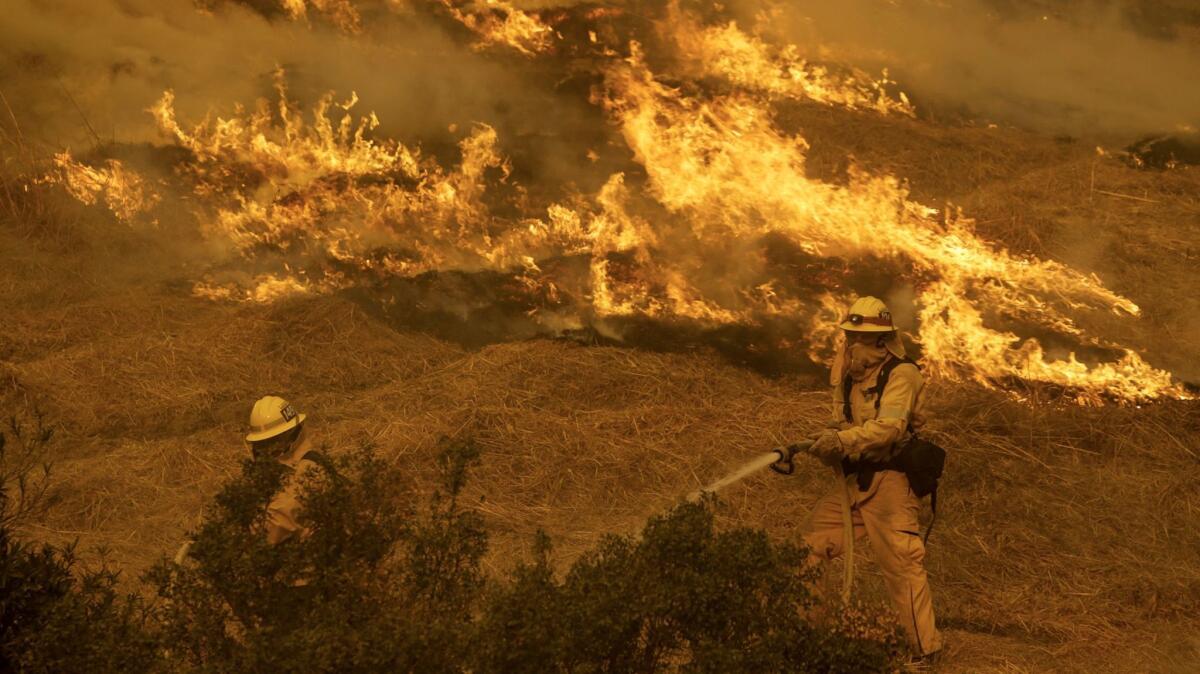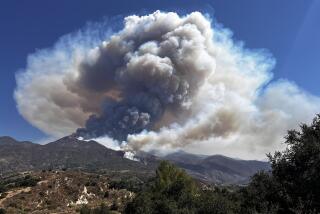Editorial: While Southern California battles its wildfires, we have to start preparing for our hotter, drier future

Wildfires have been a part of the California ecosystem since long before modern settlement, let alone the exurban sprawl that brings housing and development into fire-prone areas. We tend to deal with the possibility of raging firestorms abstractly — local governments do a little planning, fire departments offer advice on clearing brush and other flammables from property, insurers sell policies to cover our losses if a fire actually burns our homes and businesses to the ground. But those steps don’t prepare us for the violent reality.
The fire currently raging in Ventura County (the Thomas fire) and the one in foothill neighborhoods around Sylmar in the San Fernando Valley (the Creek fire) are breathtaking in two ways: the sheer power of wind-driven wildfire to devour landscape, whether it hold scrub brush or mansions, and the fragility of human life in the face of it. Forecasts predict this current round of Santa Ana winds will run with varying intensity through most of the week, which means these two major fires — moving too fast to be contained — have only just begun to destroy property and upend lives. And it means, too, that additional dangerous fires are likely to crop up. The Riverdale fire already is burning in Riverside County, though firefighters at the moment seem to have that 50% contained. And late Tuesday morning, Los Angeles County firefighters were trying to halt yet another fire — the Rye fire — near Santa Clarita, which grew quickly and forced the closure of the 5 Freeway.
There will be time for assessments after these firestorms subside. Were they natural or human-caused? Would better zoning limit exposure? Do we have sufficient capacity to fight so many fires at once? Are there better building materials we should be using to limit fire damage? For the time being, we must focus on evacuating where prudent, getting firefighters the support they need to protect as much property as possible without endangering themselves needlessly, and hope that the destruction we’ve already seen stands as the peak of this outbreak, and not just the opening act. October’s wine country fires, which killed 44 people, turned Santa Rosa neighborhoods to ash and damaged or destroyed more than $3 billion in property, serve as a sober warning of how bad this can get.
What should make Southern California fearful is that climate change could mean a future of more frequent and more intense wildfires. Today’s fires will end, and what we do afterward — assessing how to better prepare, and how and whether to rebuild — will influence the damage from the fires next time.
Follow the Opinion section on Twitter @latimesopinion or Facebook
More to Read
A cure for the common opinion
Get thought-provoking perspectives with our weekly newsletter.
You may occasionally receive promotional content from the Los Angeles Times.










